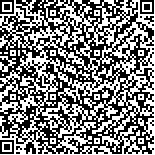| 胡彩霞,盛嘉懿,孙良红,等.2002—2022年上海市浦东新区胰腺癌死亡趋势及年龄-时期-队列模型分析[J].中国肿瘤,2025,34(7):522-529. |
| 2002—2022年上海市浦东新区胰腺癌死亡趋势及年龄-时期-队列模型分析 |
| Mortality Trends and Age-Period-Cohort Model of Pancreatic Cancer in Shanghai Pudong New Area, 2002—2022 |
| 投稿时间:2024-12-12 |
| DOI:10.11735/j.issn.1004-0242.2025.07.A004 |
|
 |
| 中文关键词: 胰腺癌 死亡率 潜在减寿年数 年龄-时期-队列模型 上海 |
| 英文关键词:pancreatic cancer mortality rate potential years of life lost age-period-cohort model Shanghai |
| 基金项目:上海市加强公共卫生体系建设三年行动计划(2023—2025年)重点学科(GWVI-11.1-02传染病学);浦东新区卫生健康委员会联合攻关项目(PW2023D-15) |
|
| 摘要点击次数: 62 |
| 全文下载次数: 25 |
| 中文摘要: |
| 摘 要:[目的] 分析2002—2022年上海市浦东新区居民胰腺癌死亡趋势及寿命损失情况,探讨年龄-时期-队列效应对死亡风险的影响。[方法] 通过上海市人口死因登记系统收集2002—2022年浦东新区居民胰腺癌死亡资料。运用Excel 2010计算粗死亡率、标化死亡率、潜在减寿年数(potential years of life lost,PYLL)、潜在减寿率(potential years of life lost rate,PYLLR)和平均减寿年数(average years of life lost,AYLL);运用Joinpoint回归计算平均年度变化百分比(average annual percentage change,AAPC),分析评估胰腺癌死亡率的变化趋势;采用R 4.4.1拟合年龄-时期-队列模型,分析胰腺癌死亡风险的年龄、时期及队列效应。[结果] 2002—2022年浦东新区居民胰腺癌粗死亡率从 10.42/10万升至 18.73/10万,呈显著上升趋势(AAPC=2.90%,P<0.001);标化死亡率整体平稳(AAPC=-0.05%,P=0.775)。男性粗死亡率(17.09/10万)高于女性(13.75/10万),均呈上升趋势(AAPC分别为3.05%和2.75%,P均<0.001)。40岁后,无论男性或女性,胰腺癌死亡率均随年龄的增长而显著上升。PYLL为31 347人年,呈上升趋势(AAPC=1.83%,P<0.001),AYLL为3.59年,呈下降趋势(AAPC=-2.45%,P<0.001)。年龄效应显示,年龄增长增加胰腺癌死亡风险;时期效应显示,2002—2016年胰腺癌死亡风险下降,随后上升;队列效应显示,随出生队列推移,死亡风险上升。[结论] 2002—2022年上海市浦东新区胰腺癌死亡率呈上升趋势,男性死亡率高于女性。胰腺癌死亡风险随年龄增长而上升,越晚出生的居民死亡风险越高。需针对男性、老年群体加强早期筛查,结合队列效应特征关注环境与生活方式风险因素,优化全人群防控策略。 |
| 英文摘要: |
| Abstract:[Purpose] To analyze the trends in pancreatic cancer mortality and disease burden among residents in Shanghai Pudong New Area from 2002 to 2022, and to investigate the effects of age, period, and birth cohort on mortality risk. [Methods] Data on pancreatic cancer deaths among residents of Pudong New Area from 2002 to 2022 were collected through the Shanghai Population Cause of Death Registration System. The crude mortality rate, age-standardized mortality rate by Chinese standard population (ASMRC), potential years of life lost (PYLL), potential years of life lost rate (PYLLR), and average years of life lost (AYLL) were calculated. Joinpoint regression was applied to calculate the average annual percentage change (AAPC) for analyzing the changing trend of the mortality rate of pancreatic cancer. The age-period-cohort model was applied with R 4.4.1 to analyze the age, period, and cohort effects on the mortality risk of pancreatic cancer. [Results] The crude mortality rate of pancreatic cancer among residents in Pudong New Area increased from 10.42/105 in 2002 to 18.73/105 in 2022, showing a significant upward trend (AAPC=2.90%, P<0.001); the ASMRC was generally stable (AAPC=-0.05%, P=0.775). The crude mortality rate of males (17.09/105) was higher than that of females (13.75/105), and both showed an upward trend (AAPC=3.05% and 2.75% respectively, both P<0.001). After the age of 40, the mortality rate of pancreatic cancer increased significantly with the growth of age in both sexes. The PYLL was 31 347 person-years,showing an upward trend (AAPC=1.83%, P<0.001), and the AYLL was 3.59 years, showing a downward trend (AAPC=-2.45%, P<0.001). The age effect showed that the mortality risk of pancreatic cancer was increased with age; the period effect showed that the mortality risk decreased from 2002 to 2016 and then increased; the cohort effect showed that the mortality risk increased with the advancement of the birth cohort. [Conclusion] From 2002 to 2022, the crude mortality rate of pancreatic cancer in Pudong New Area showed an upward trend, and the mortality rate of males was higher than that of females. The mortality risk of pancreatic cancer increases with age, and the later the birth year of the residents, the higher the mortality risk. Early screening should be strengthened for men and the elderly, environmental and lifestyle risk factors should be paid attention to in combination with the characteristics of cohort effect, and the prevention and control strategy for the whole population should be optimized. |
|
在线阅读
查看全文 查看/发表评论 下载PDF阅读器 |